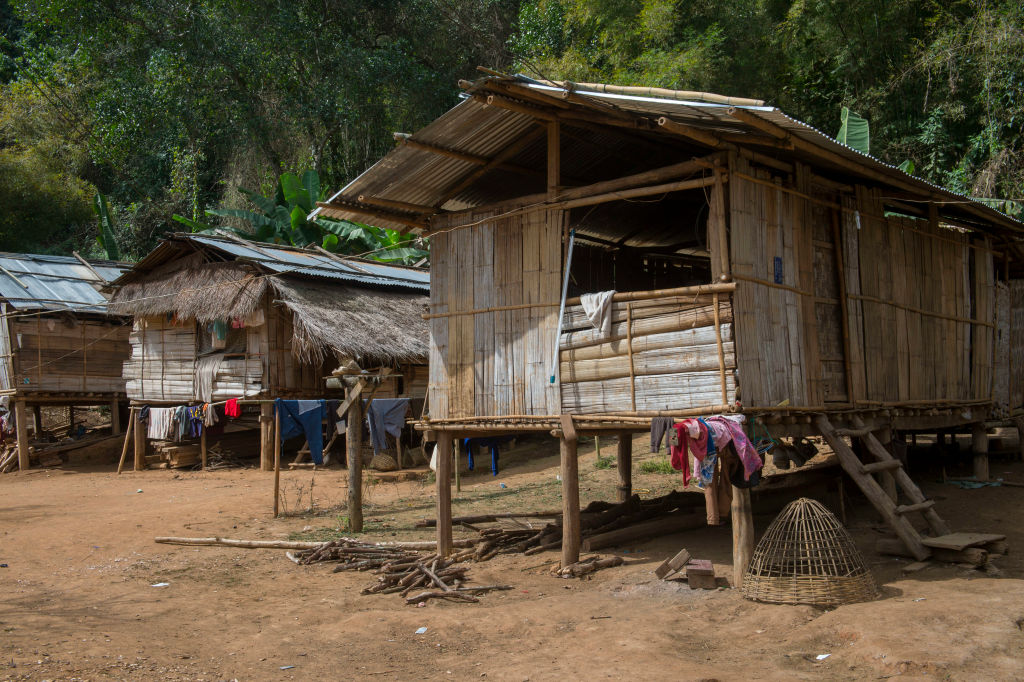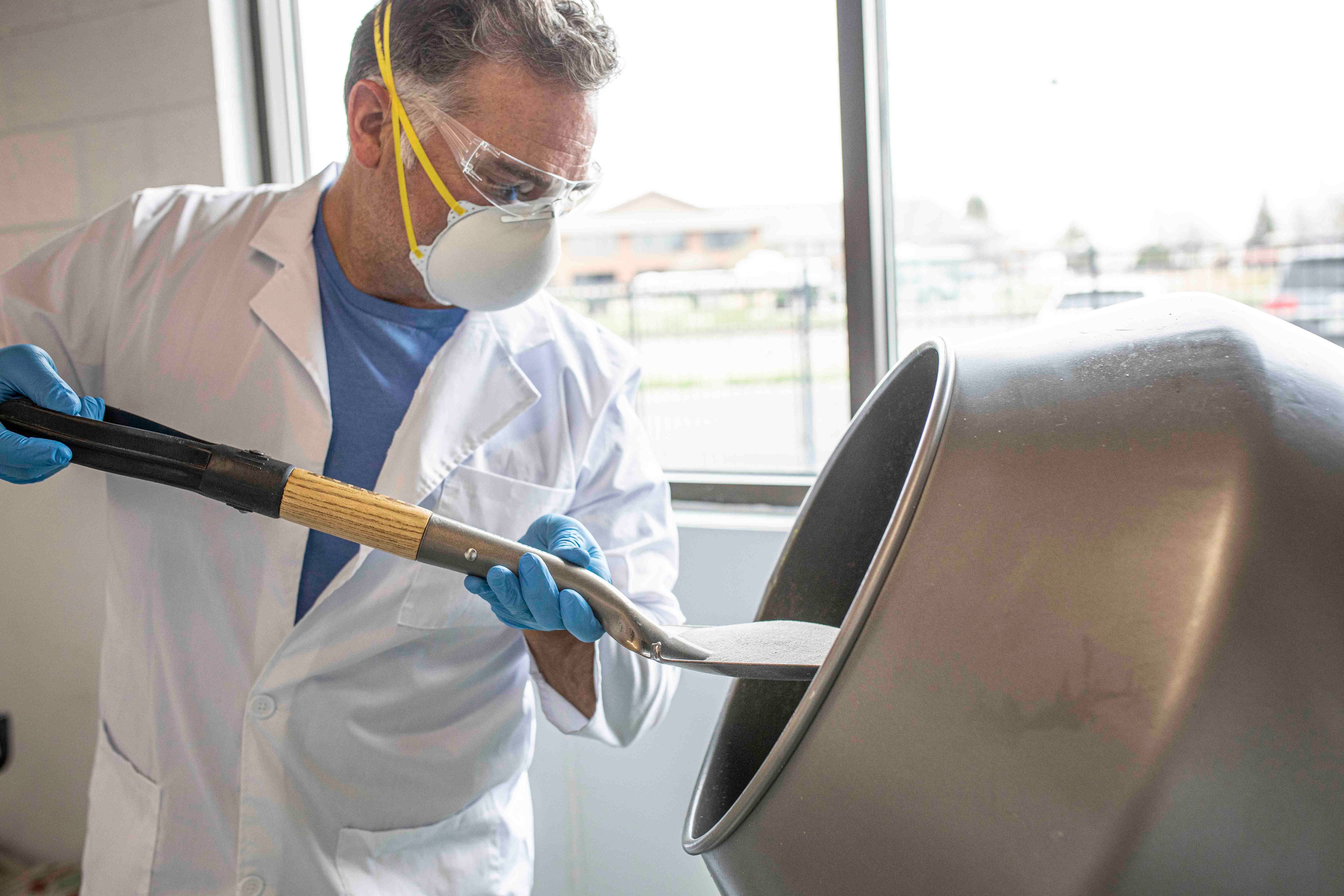Cutting Construction’s Climate Impact with Algae Bricks
Cement—the important binding component in concrete, bricks, and mortar—is a climate nightmare. To make it, you heat limestone and clay to exceptionally higher temperatures applying carbon-polluting fossil fuels. That triggers a chemical process, which also releases large quantities of carbon dioxide into the ambiance. The course of action is so carbon-intense and cement is so greatly-applied that it accounts for all around 8% of world wide CO2 emissions. With the world’s constructing stock projected to double by 2060, weather advocates are desperate for substitute supplies to come to market—fast.
A factory in Longmont, Colo., might have the remedy. By the stop of this year, it will start out churning out concrete bricks manufactured not from cement—but from algae. Prometheus Products, which formed in 2021 out of a investigate venture at the College of Colorado, normally takes microalgae usually identified in lakes or ponds and grows it in bioreactors. They insert air, so the algae can feed on the carbon dioxide it incorporates, as properly as sea h2o and light from LED lamps. That enables the algae to produce a cement-like compound able of bonding jointly sand with gravel or stone to make concrete. The method mimics the purely natural course of action by way of which organisms sort challenging coral reefs and seashells.
The algae-primarily based bricks are set to be commercially obtainable in 2023. They ended up created in partnership with and component-funded by U.S. architecture firm Skidmore, Owings & Merrill (SOM)—known for producing the Burj Khalifa in Dubai and New York’s A single Planet Trade Middle.
Building the bricks at present emits a tenth of the CO2 of typical concrete block production, according to Prometheus Components CEO Loren Burnett. When the corporation finishes putting in solar panels to electric power its producing plant, that system will be carbon neutral, and, in a few many years, carbon destructive, according to Burnett. “There’s pretty much no CO2 emitted through the system and we truly sequester CO2,” he claims. “Because the algae absorbs it by means of photosynthesis, and we then embed that algae into our making resources.”
Prometheus’ output timeline puts it in close proximity to the forefront of a movement to substitute carbon-intense common building supplies, like metal and concrete, with products derived from vegetation and other organisms. The so-named “bio-based” supplies sector is nonetheless in its infancy. But supporters say it has the likely to change the building market from one of the world’s most significant emitters—responsible for 11% of CO2 emissions—to an absorber of carbon. That is, from a local weather villain, to part of the remedy.
A new era of plant-primarily based buildings
Applying mother nature in building is nothing new. Individuals have been using the plants and natural and organic subject that expand about them and turning it into constructions for countless numbers of years. From South Africa to England to Afghanistan, straw has lengthy been blended with soil and drinking water to make cob. Quick-growing and potent bamboo is a key element of a large amount of conventional architecture in East Asia. And timber has retained its historic recognition in several nations, with 90% of new residences in the U.S. however manufactured with wood frames. Above the very last number of decades, environmental campaigners have pushed for individuals carbon-absorbing materials to turn into the norm in residences and little-scale design.

Common homes on stilts designed from bamboo in Ban Muangkeo Village, a cultural heritage village on the Mekong River in Laos.
Wolfgang Kaehler—LightRocket/Getty Images
But developing on a huge scale with pure elements has proved hard (although a couple substantial-profile wooden skyscrapers are popping up in some towns). So, scientists are creating a new generation of organic and natural-derived products robust and flexible ample to switch carbon-intense steel and concrete. To encourage all those efforts, in June, the U.S. Section of Electricity announced $39 million in grants for 18 projects operating on “technologies that can change structures into web carbon storage buildings.” The College of Colorado group guiding the algae bricks is a single of the recipients. A further grantee is doing the job on a fungi-based insulation content that can be made use of to retrofit houses. A third needs to increase microbes to wood to develop a “living” content “with the energy of steel.”
Browse far more: Households Built from Straw or Fungi Can Now Get You a Less expensive House loan in the Netherlands
Only a handful of new bio-dependent supplies have produced it to market currently: bioMason, a Durham, N.C.-based organization, which feeds bacteria with calcium and CO2 to crank out a bio-cement, now sells tiles in the U.S. and Europe. Meanwhile, Dutch biotech company Basilisk sells concrete containing limestone-manufacturing microbes, as properly as a mixture that can be used to current properties, which will allow concrete to self-mend from cracks, lessening the need to have for avoidable demolitions and re-builds.
Most organizations establishing bio-based elements deal with the similar challenges as other climate-pleasant tech: they are continue to struggling to scale up lab successes to a professional scale, at costs that can compete with carbon-polluting possibilities. Some also require to figure out how to get hold of significant volumes of their chosen organic and natural matter without competing for land with the agriculture market, nature restoration tasks, and renewable vitality.
What would it just take for algae bricks to go mainstream?
But Brant Coletta, a husband or wife at SOM, who worked with Prometheus to layout their bricks, statements the technology’s “easy scalability” was the main draw for the architecture agency. Originally Prometheus will increase its algae—which can double in quantity each four to six hours—at its Colorado plant, to deliver its cement-like substance, turn it into bricks, and ship them to customers. In 18 months, they will start off transport a dried, light-weight-weight edition of the bio-cement, so that clients can turn it into bricks—without high priced equipment or extremely experienced team.

Prometheus feeds microalgae with seawater, CO2, and gentle to generate a cement-like compound
Brooks Freehill
To convince Coletta of that past issue, a person of Prometheus’ co-founders sent him a couple bricks in the mail alongside with photographs of his youthful kids building them in their yard. “Quality regulate possibly wasn’t the strongest in that, but it demonstrates how this is a product that can come across its way into the worldwide industry,” Coletta suggests.
Security certification of Prometheus’ algae bricks, by the American Modern society for Screening and Products, need to be entire by the finish of the calendar year, together with design of the manufacturing plant, according to Burnett. He says the plant will promptly start off making “tens of thousands” of bricks and rapidly scale up to a “significant” amount—though he would not disclose projected volumes, citing industrial causes. Burnett also declined to share the last price of the bricks before output begins and the business can be guaranteed of its fees. “Our intention is to not have any eco-friendly top quality connected to our blocks,” he claims.
Even if the cost of the bricks proves to be comparable to traditional concrete blocks, it may just take architects and developers a few a long time to have confidence in that “they will perform and have limited-to-no cost impression on assignments,” Coletta suggests. There is not significantly info on how commonplace organic-derived materials are in the construction marketplace. Even in the Netherlands, which has emerged as a hub of sustainable making practices in recent years, gurus say all around 3% of components utilised are bio-centered.
But SOM, which designs by itself as a leader in eco-friendly architecture and is keen to present customers with very low-carbon alternatives, will add the bricks to its roster of products as quickly as protection certification is entire. “We’ve experienced clients come in and they see us working on this and say they want it in their job proper absent,” Coletta claims. “It’s really hard for me to maintain my style groups back again.”
A lot more Should-Read through Tales From TIME







